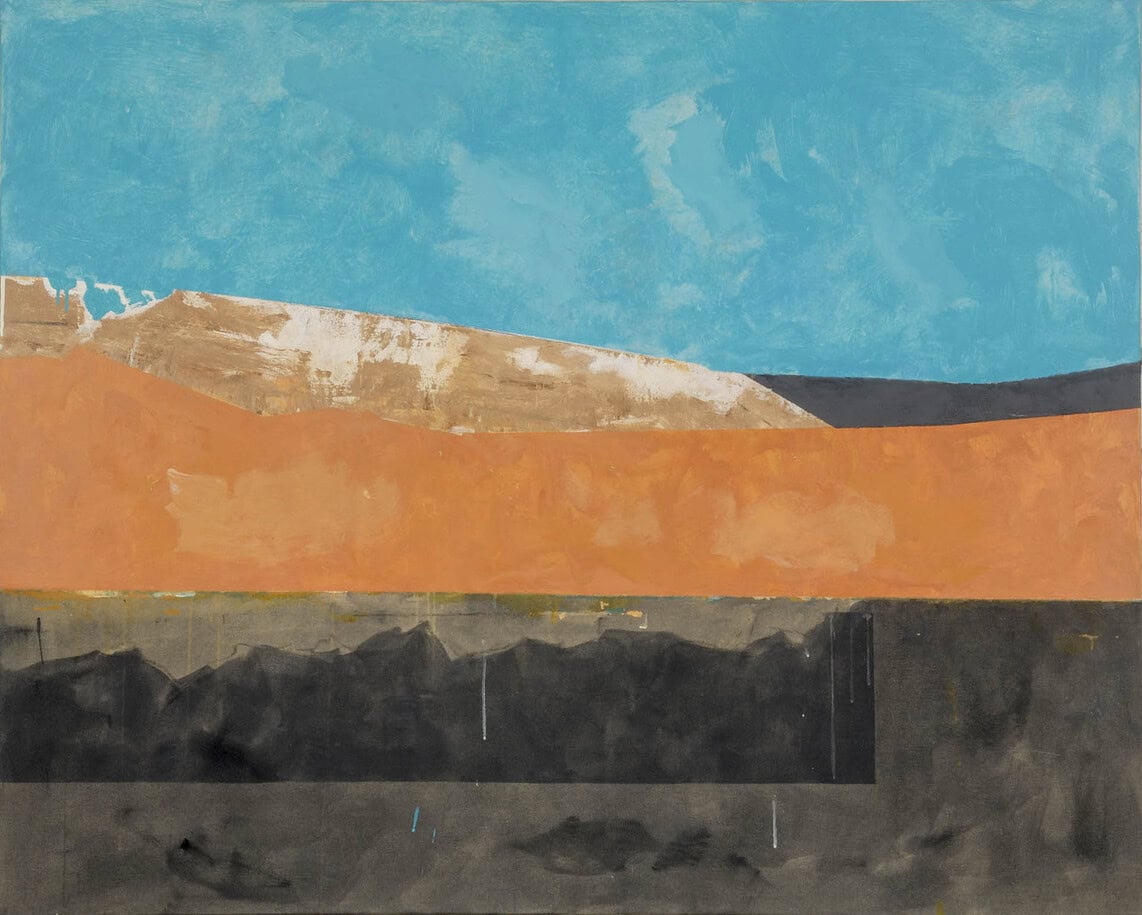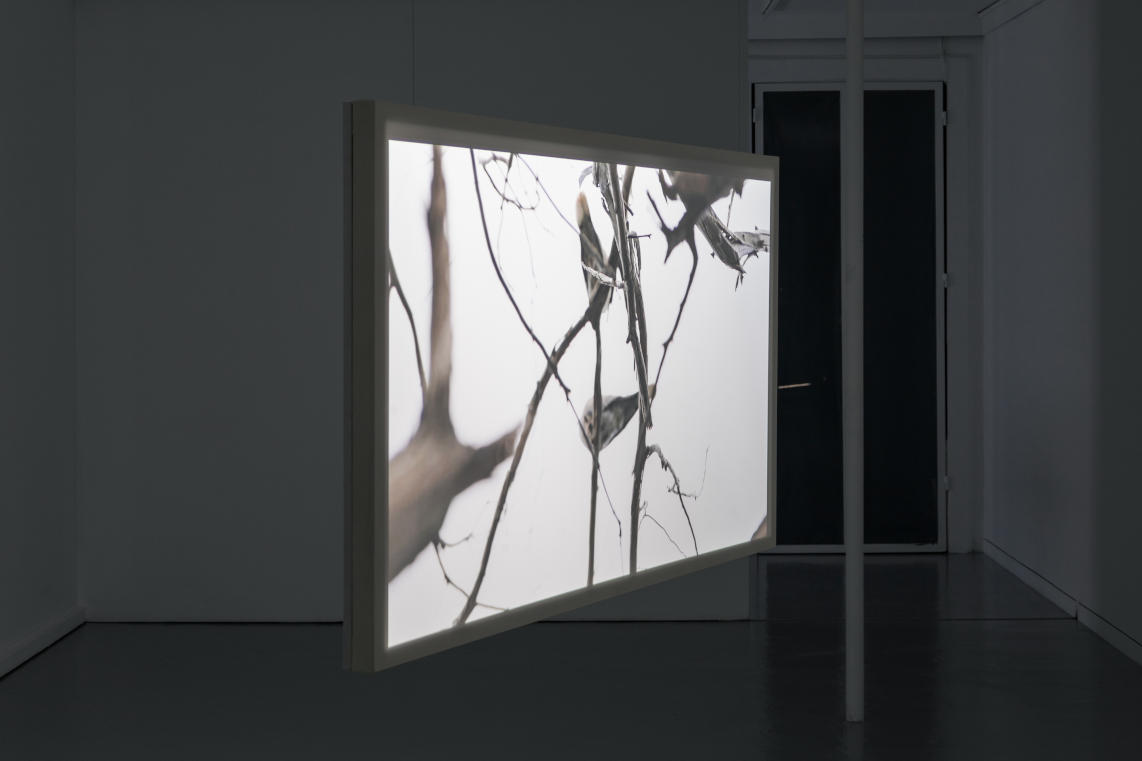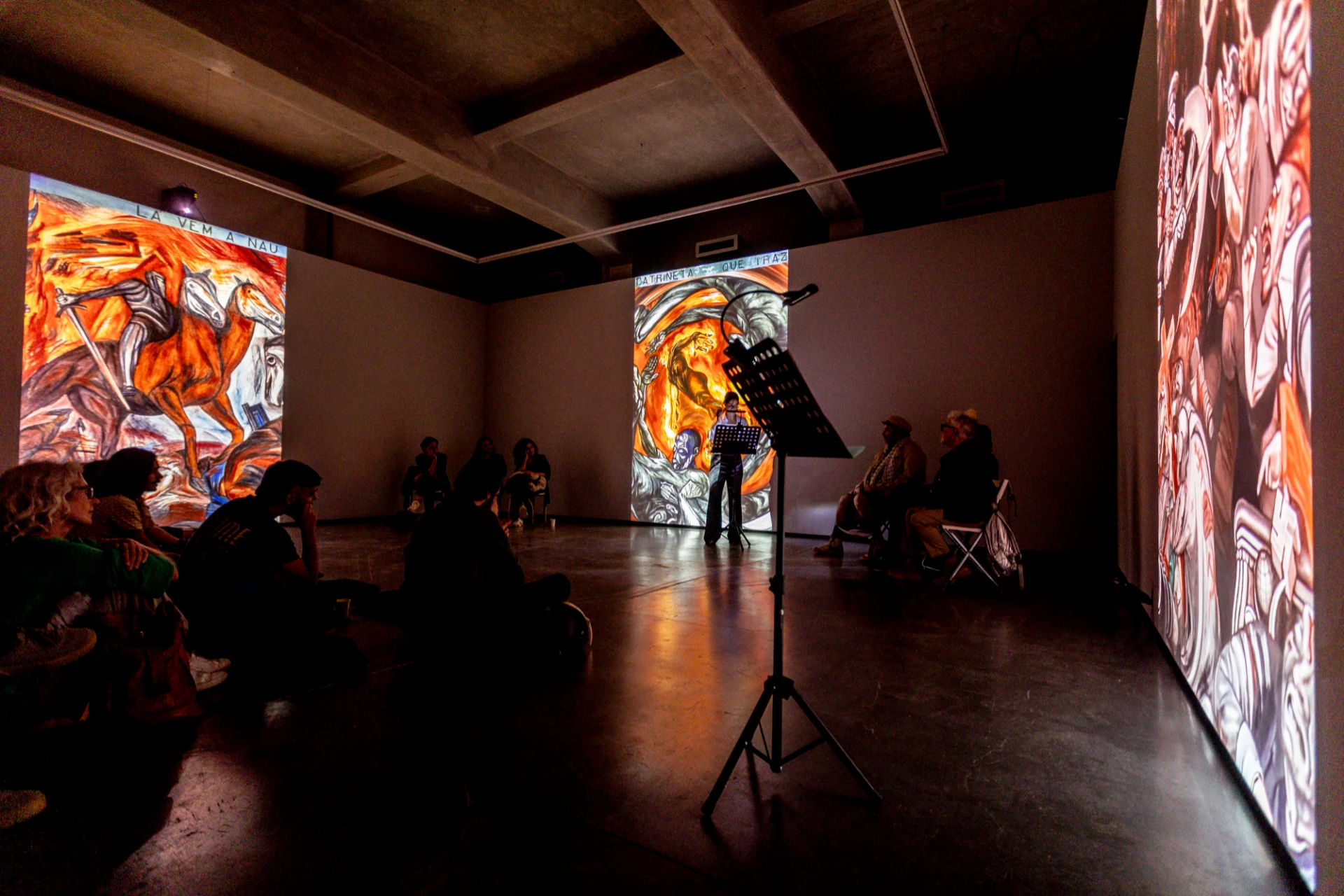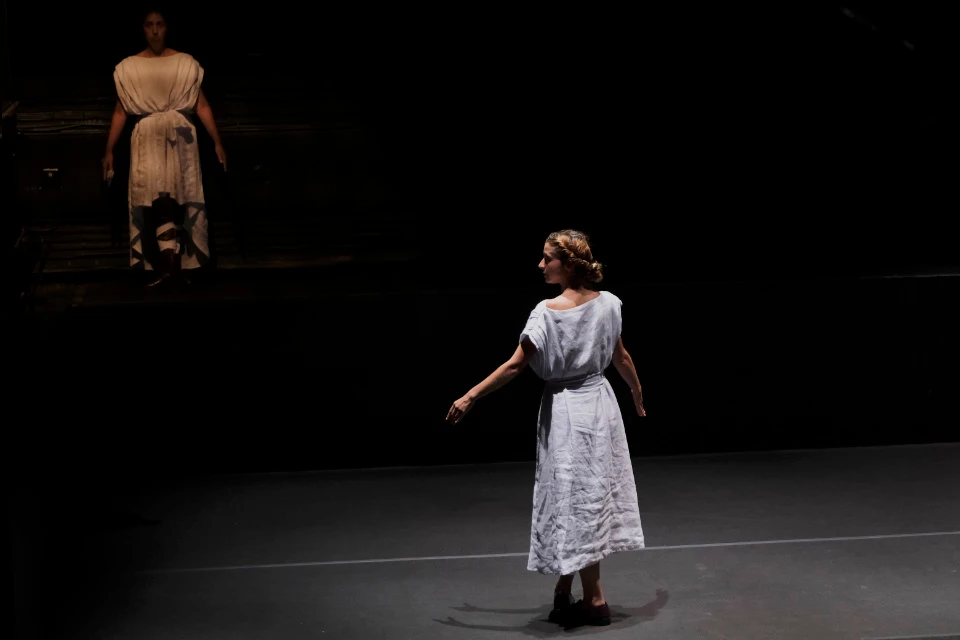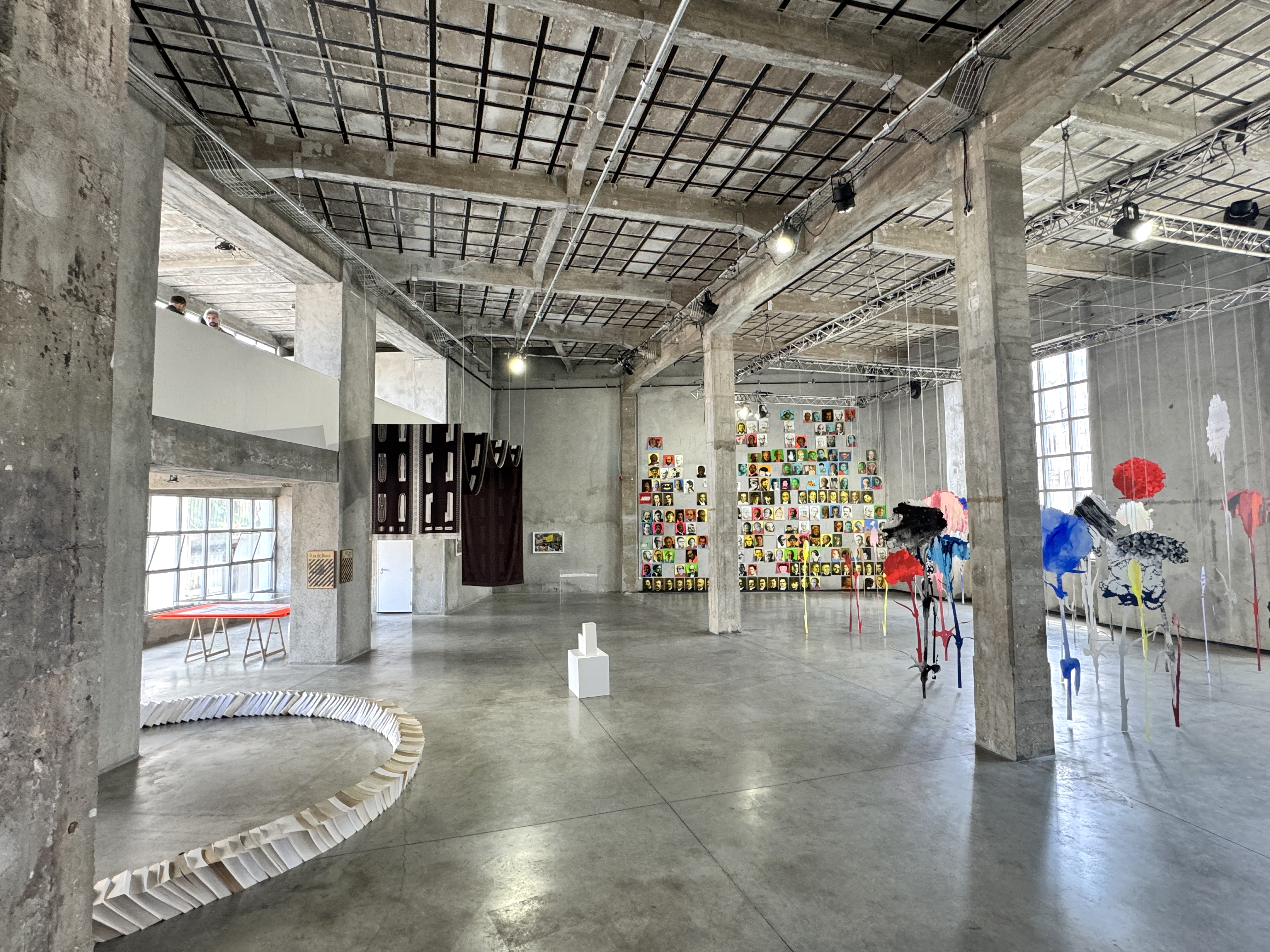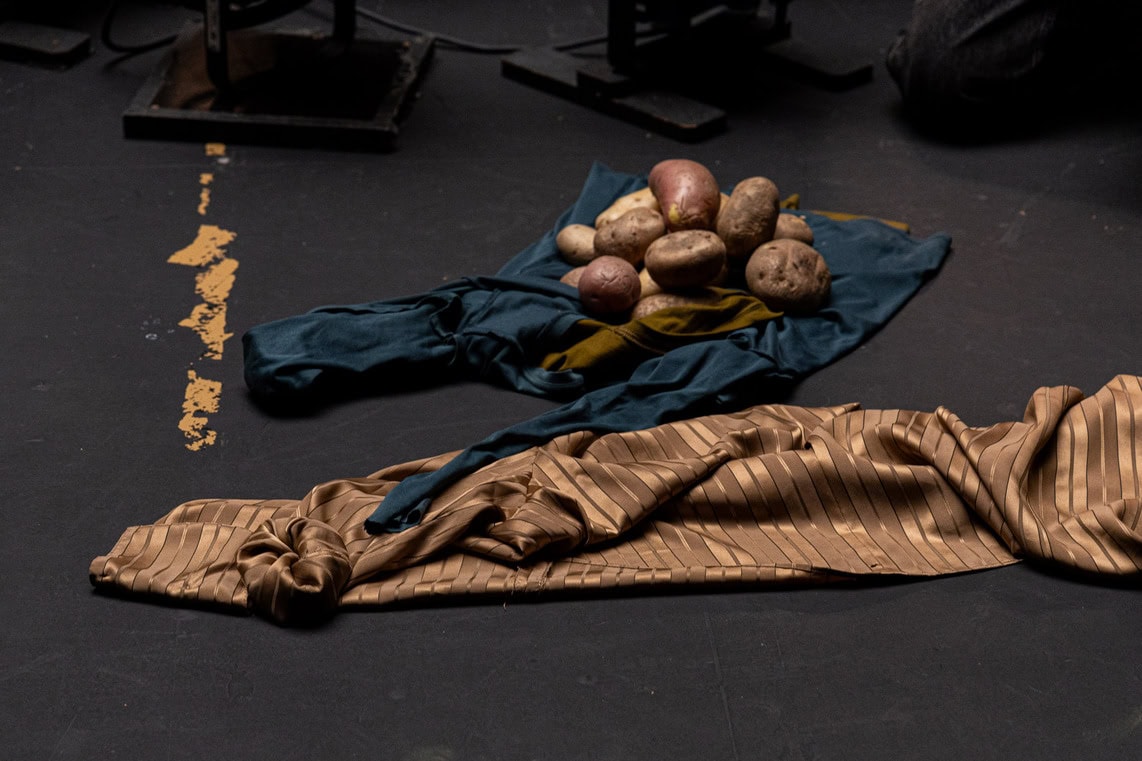The invitation to the show Cooperativa (Teatro do Bairro Alto, April 24 to 27), by dancers Ana Rita Teodoro, Clarissa Sacchelli, Daniel Pizamiglio, Filipe Pereira, João dos Santos Martins and Sabine Macher, culminates with the question “What can a potato do?”
Perhaps unexpectedly, the potato is a global cultural agent. Unknown to most of the planet until the 17th century, except for the Andean peoples of South America, where it originated, who had been cultivating it for around 8,000 years, the potato is an object recognizable to everyone (or almost everyone) regardless of class or geography. Today we may not know how to name quinoa, or identify this vegetable, or in previous decades the same could be said about the kiwi, thanks to exoticisms or fads, but the potato is an omnipresent element in our food reality.
In effect, the performance of the potato, that is, its movement, shares the transits that globalizing expansions have provoked in the world and in societies. Globalization of ideas, markets, behaviours, where we cannot exempt slavery, and territorial and religious domination.
Upon entering the theatre at TBA, we are greeted by a bare black room containing little more than the objects in the theatre box itself. The audience can wander around the large stalls; the stage is reserved for a surprise at the end: the potatoes that are being roasted on top of the light projectors, which are eaten in the final scene. The performers, among the audience, inhabit the space and gradually fill it with their lively, radiant and receptive energy of presence.
There are piles of potatoes of various shapes and sizes scattered throughout the space. The performers perform various uncodified exercises, perhaps still a ritual, interacting with each other and with the spectators, leading to a collective sensory activation. Potatoes are handed to the spectators, they are passed around in the circle that has been formed, and they are rolled on the floor among everyone. The dancers line up one potato after another, in a straight or serpentine stripe across the black boards of the audience. A design is created that is soon erased, it is a coincidence and a desire creating evanescent links. All the gestures are of an apparent simplicity, a simple search as if Since we are all here… and so the event exists. The search exercise continues and strengthens. The spectators – meanwhile called to participate – interact with the performers, undistinguishing functions and categories. In effect, without participation (a form of symbiosis, in terms of ecology), the show would not exist. Then, the potatoes are passed around in a heap, under the knees, with people sitting on the floor. A frenzy and urgency take hold of everyone. It is a convivial atmosphere, even among strangers.
The repeated actions and gestures create a body-machine, organic and actional. We continually see the emergence of a work mechanic, someone even intoning a low-pitched chant, a murmuring choir that grows. This is not unrelated to the title of the show Cooperativa, alluding to the associations of producers in a given economic activity, who together decide, execute, manage, attempting a horizontality of importance. Right from the synopsis in this direction: “transformative ways to build a common good”. Cooperation that emerges in contrast to competition, extractivism, protagonism, productivity, all indisputable signs of contemporary experience.
In any case, if, on the one hand, this piece stimulates the strength of the collective, the tacit negotiation of what needs to be done, on the other hand, it announces the illogicality of the work. What the piece has in sensitivity and sweetness, it also has in absurdity, that is, the absence of a forced causality. The chance of the occurrence is its motivation, in the group of subjects present. It is the conviviality that generates the moment – and its next.
Suddenly, a small group, standing shoulder to shoulder in a circle, has the task of carrying a sack of potatoes. A sack that sometimes takes form in a shirt pulled up in front of a hollow belly, sometimes a pile of clothes; some potatoes fall and are picked up. The banal circumstance is transfixed with value. And suddenly the performers go in fast circles, one after the other, some calling out to the others. They are playing, the smile on their faces betrays them in the gratuitous and unmotivated gesture. Daniel, suddenly naked, because it is a matter of playing, exploring; human skin and potato skin resemble and are set apart from each other. And suddenly, Ana Rita starts crying. And suddenly, João breaks into a run. And suddenly, Clarissa is born with her voice. And slowly, Sabine chats away. And slowly Filipe comes to you.
The potato goes through several symbolic nuances: transmission, sharing, care. Passed from hand to hand, eye to eye, the unique tuber that fills our bellies (and is also the totem of Axomama, the Inca goddess of the potato) is synonymous with intimacy and solidarity. The potato is also an interface that mediates not only labour and the collective, but also the subject and the object: is it the body that handles the potato, or is it the potato that makes the body dance? If at first the vegetable is manipulated by the participants, handed over body to body, at this stage it will go from being an object to an agent, intervening as the protagonist of the dance. Faced with an undefined set of bodies (performers or spectators), the potato takes the lead and with it each one becomes individualized. A potato is a life, a purpose, a gesture. The tuber functions as a device that gives rise to the spark of the singular, like a medium for knowing the world. The potato is like a sensitive and haptic interface.
Understanding the material conditions that surround us, Cooperativa is a game of sensoriality, a productivity of leisure and playful vigour, giving form to the random, to the pause, considering the historical becoming of the transatlantic and global movement of the potato. Heuristically, the potato becomes material joy. Finally, the potato resumes its basic function: it is eaten by the guests.
